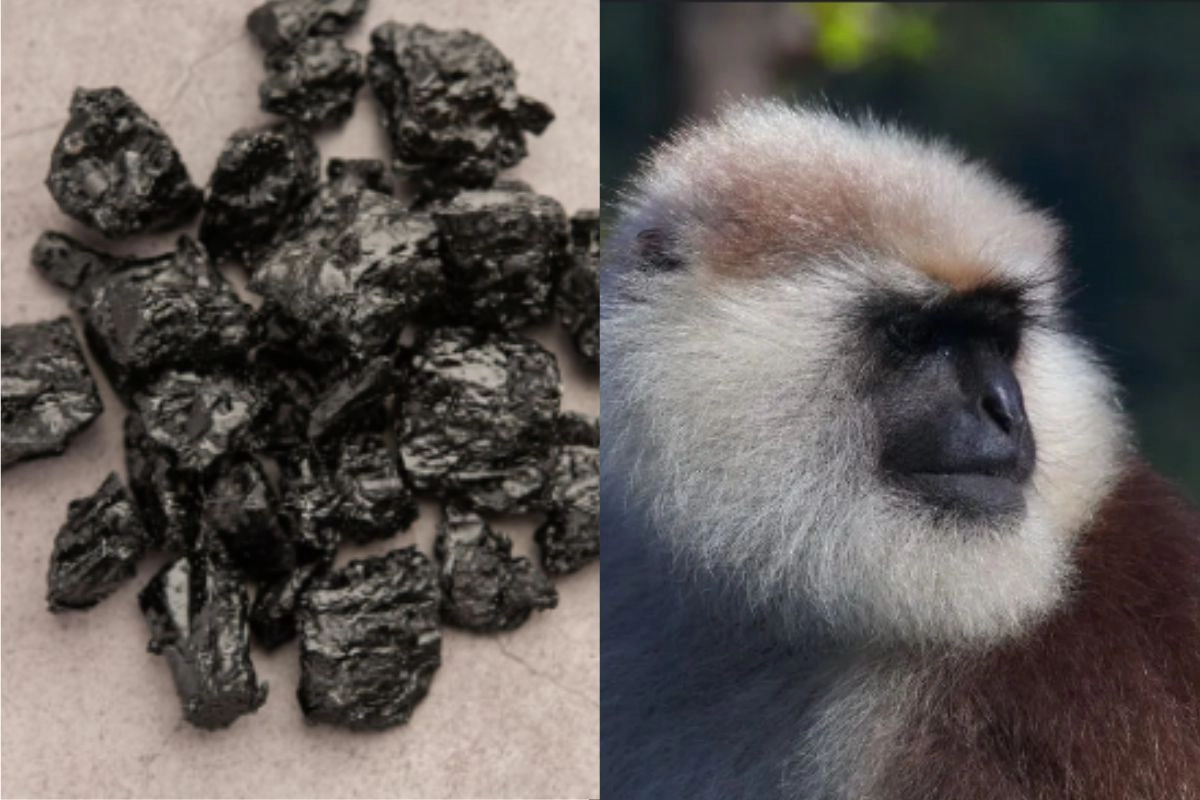Shilajit: Besides being known for decades to researchers and enthusiasts, Shilajit has been greatly recognized in Ayurvedic and folk medicine. This bituminous compound is said to have health benefits that range from physical enhancement to the improvement of cognitive function. But the story of Shilajit is not just about history and chemical composition; it is more surprising since monkeys in the Himalayas were a really big part of its rediscovery.
Ancient Origins and Description
Shilajit, in its botanical name known as Asphaltum, or mineral pitch, is a dark, gummy substance that predominantly exudes out of the crevices of the rocky Himalayas. Over 3,000 years ago, ancient Sanskrit texts dubbed it a “destroyer of weakness,” since it held a great position in esteem within traditional medicine. To this day, the term in Sanskrit, “Shilajit”, roughly translates to “conqueror of mountains and destroyer of weakness” because of this potent reputation. This is supported by other ancient texts, the Sushruta Samhita and Charak Samhita, under different names, based on Shilajit’s benefits to health and wellness dating back in history.
The Monkey Connection
The rediscovery of the possible benefits of Shilajit is a story that starts with the unlikely observer: villagers in the Himalayas. These villagers observed how large white monkeys, migrating into the mountains during the warm summer months, chewed on a semi-soft substance oozing from between rock layers. This mysterious substance was said to be responsible for the monkeys‘ strength, longevity, and apparent vitality. The villagers started consuming it too and soon reported remarkable health improvements: more energy, improved digestion, better libido, sharpened mind, and overall quality of life.
This behaviour of the monkeys led to one very interesting practice. During the peak summer heat, Shilajit exudes from mountain rocks, then congeals into lumps. These lumps emit a characteristic odor, which tempts a special race of mountain monkeys. The local collectors noticed this very fact that the monkeys were attracted to Shilajit and found an amusing way to collect this substance-they would throw small stones at the monkeys, and the monkeys would drop the lumps. The playful interaction brings into view how closely connected this slippery substance has become with the local people.
Modern Rediscovery and Composition
All this ancient knowledge about Shilajit was practically left unnoticed by Western medicine until the end of the 20th century. John Anderson, an indefatigable researcher of the origin of Shilajit, traveled through India and Nepal, observing the hazardous way Shilajit is collected and studied extensive Sanskrit literature on the application of the substance. Anderson’s work thus was of great help in introducing Shilajit to the whole world and revealing its amazing health-enhancing properties.
Shilajit is a herb with an unending constitution under study till today. Some of the organic acids contained in this plant are fulvic acid, humic acid, and hippuric acid. One unique class of compounds named benzopyrones is present in Shilajit. The standardization of Shilajit practiced today is essentially based on fulvic acid, whose chemical structure and properties were determined through Nuclear Magnetic Resonance Imaging (NMR).
Shilajit represents a miraculous junction of age-old tradition and modern scientific research. Adding the historical link with the Himalayan monkeys further gives it a layer of mystique; that is how nature and folklore combine to unmask the most powerful of nature’s remedies. Until further research is conducted, Shilajit will stand for the strong synergy between traditional wisdom and its modern interpretation in science, as it offers great lessons about health outcomes using this historical, plant-based resin.
